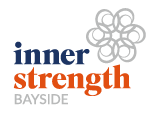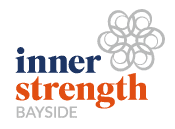Do you get a sore lower back with a lot of end range back extension and rotation?

Do you play sport that involves a lot of end of range back extension with rotation? Such sports may include cricket fast bowling, tennis, gymnastics or ballet. These extreme positions can make you more susceptible to an increase in bone stress in your lower back, which if left unmanaged can lead to a stress fracture.
This bone stress is referred to as spondylolysis and it can be an active or inactive lesion. Active lesions, known as bone stress injuries, are a result of micro-trauma to an area of the vertebra over a period of time. The bone is loaded at a level higher than its tolerance level. This micro-trauma is caused by repetitive extension plus rotation positions. Chronic lesions are typically stress fractures which have not healed.
How common are lumbar spine bone stress injuries?
• 4-9% incidence in the general population
• 20% incidence in amateur athletes
• 44% incidence in professional athletes
• Higher incidence in adolescents involved in sports with repetitive spinal loading and extension/rotation movements.
What are the signs and symptoms of a lumbar spine bone stress injury?
• Gradual onset of low back pain which may radiate to the buttock and back of the thigh.
• Pain may start low level but will increase as you continue the aggravating activity and may lead to you not being able to play your sport.
• Pain on back extension and rotation movements.
• Tenderness and muscle tightness over the lower back. How do you diagnose a bone stress injury?
• Xray can be used, but does not detect early stages of bone stress injury
• MRI has no radiation and is better at localising the bone stress to a specific area of the spine.
Management
• Stop sporting activity which loads the area e.g. jumping, landing and other movements specific to your sport.
• Avoid repeated or end range low back positions such as extension, side bending and rotation.
• Bracing can be used to protect a stress fracture and reduce pain.
• An individually prescribed rehabilitation program to prevent muscle wasting and build core and global strength. It is important that these exercises be pain free to ensure you are not placing extra stress on the injured area.
• Progression of exercises once you are pain free and MRI shows signs of bone healing.
• It may be a 6-12 month rehabilitation program.
Please contact us on 8555 4099 if you would like any more information.
Written by Luci Minogue, Physiotherapist


